Marble remains the show-stopping material of choice for kitchen islands in 2025, prized for dramatic veining, heat resistance, and everlasting elegance. Trend reports reveal a shift toward sculptural silhouettes, bold stone colorations, and islands that double as convivial hubs for cooking, work, and casual dining. The twenty complete design themes below translate these insights into practical, style-forward concepts you can adapt—each one a cohesive blueprint rather than a piecemeal tip.
1. Waterfall Edge Marble Kitchen Island
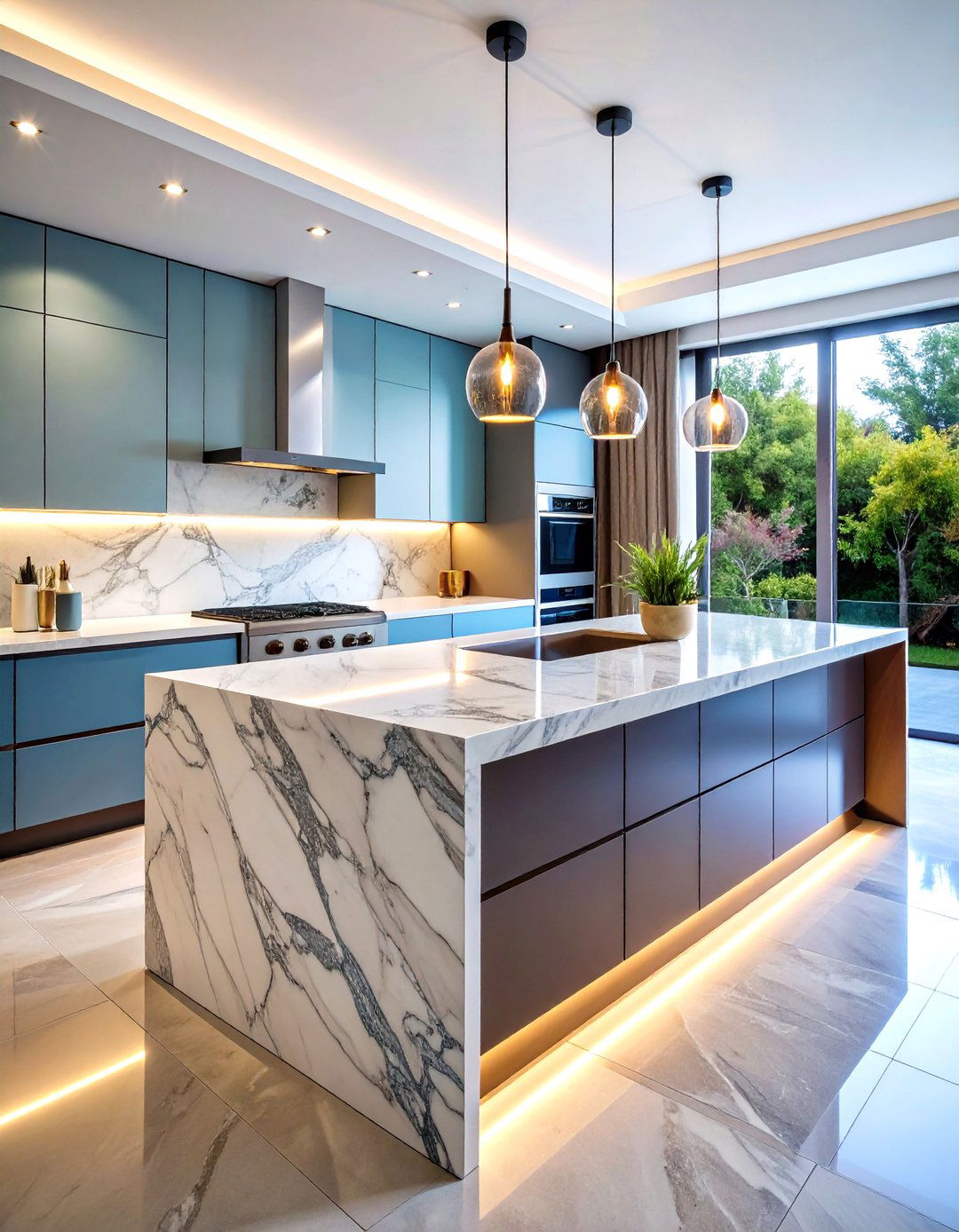
A seamless slab drapes over the top and sides like liquid stone, allowing veins to flow uninterrupted for maximum impact. Start with a robust variety such as Calacatta Viola, then keep surrounding cabinetry minimal so the island reads as a functional sculpture. Hidden power outlets beneath the counter preserve clean lines, while low-profile stools tuck under the cantilevered edge for breakfast or laptop work. LED strips recessed below the overhang accentuate the cascade at night without competing glare. Finally, seal the marble properly to protect that continuous face from scuffs caused by bar-seat traffic.
2. Contrasting Dark-Base Marble Kitchen Island
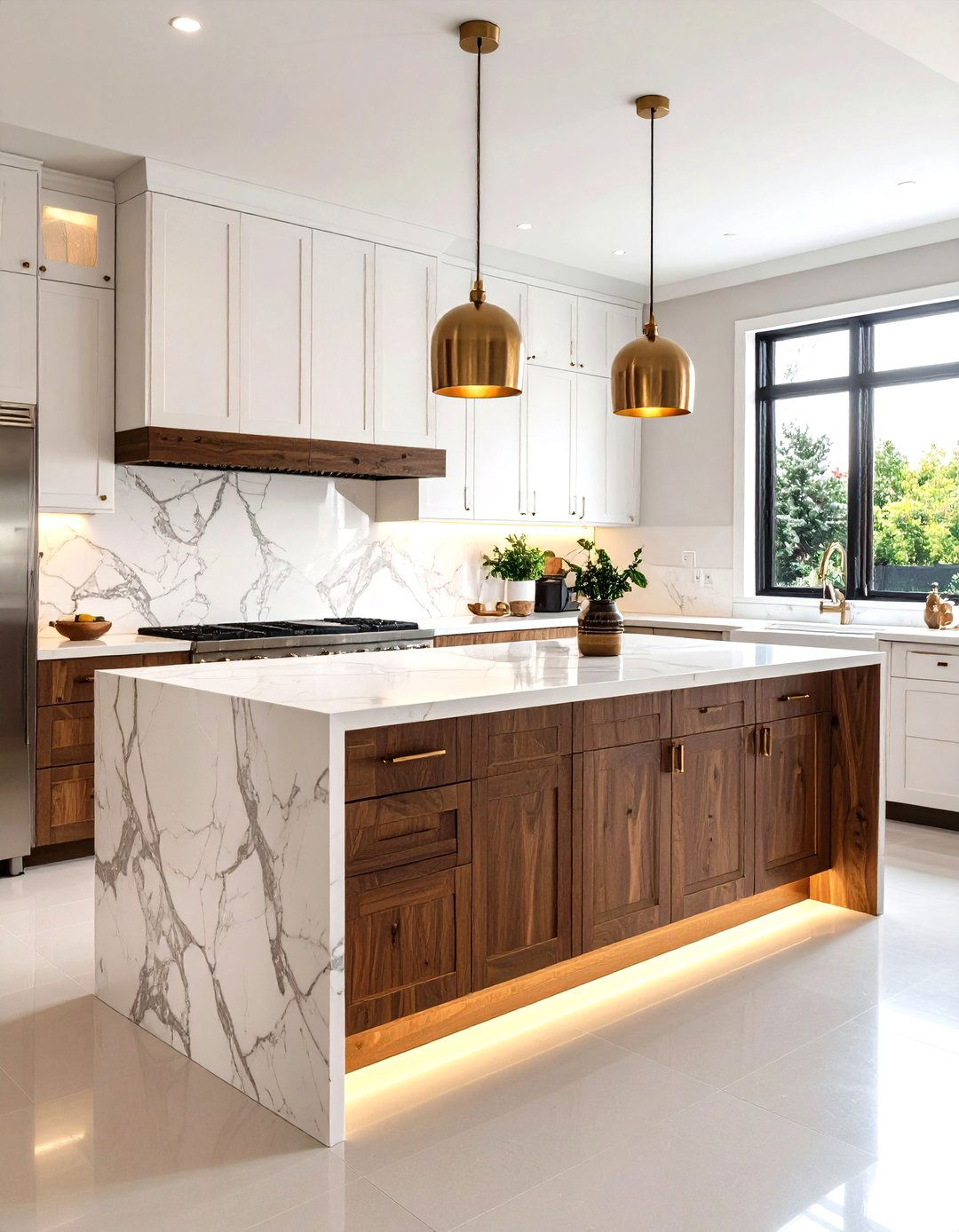
Unlike all-white schemes, pairing a deep-stained oak or matte-black laminate pedestal with a luminous patterned top spotlights the stone’s character and grounds an open floor plan. Specify drawer fronts in a push-to-open system to avoid hardware clutter and maintain the color block effect. Integrated toe-kick lighting helps the dark base “float,” adding a luxe gallery vibe after dusk. Complete the palette with warm metal pendants overhead and a backsplash that subtly echoes the marble’s undertones for visual rhythm without monotony.
3. T-Shaped Dining Marble Kitchen Island
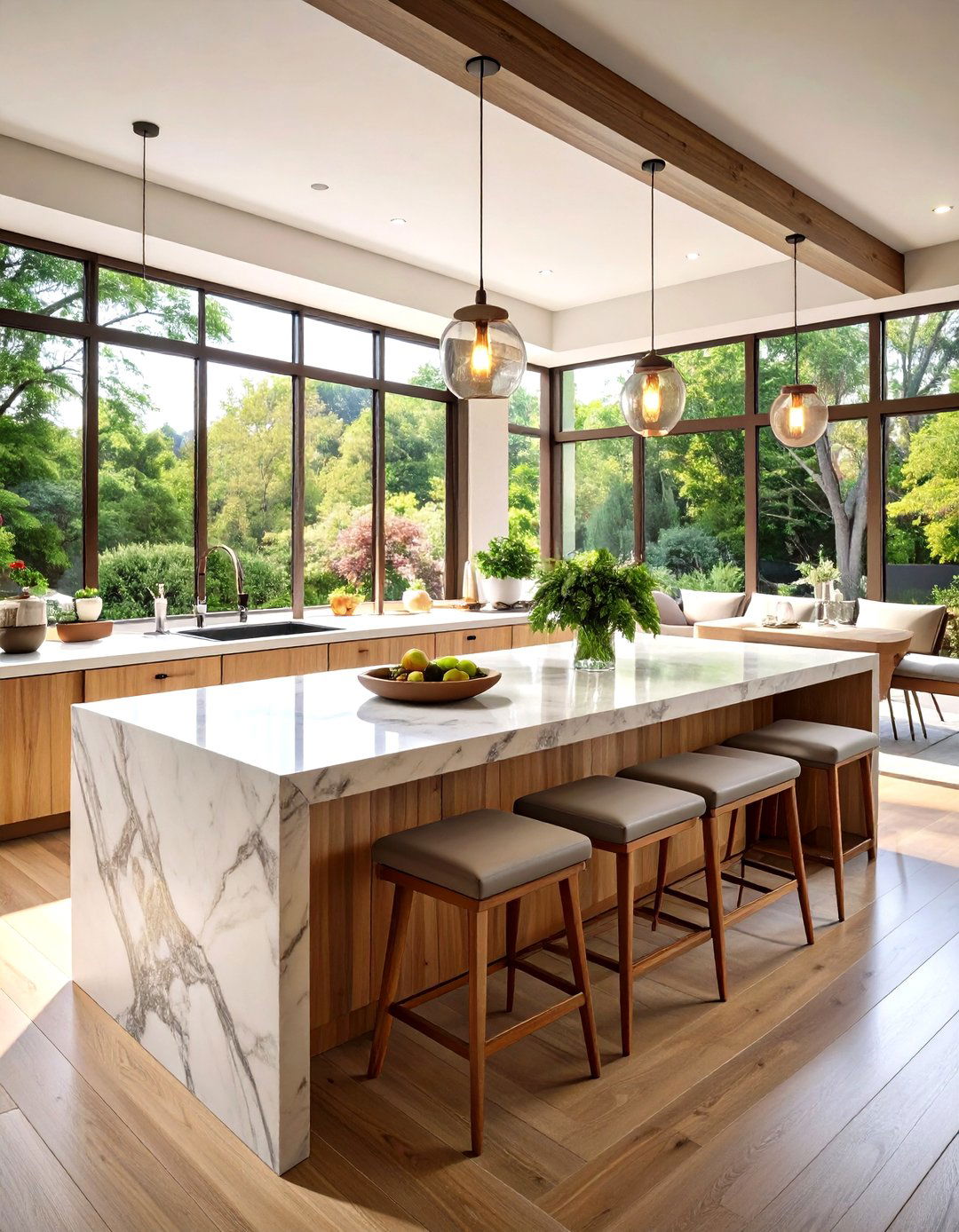
To maximize family gatherings, a perpendicular extension transforms the island into a true table, eliminating the need for a separate dining set. Choose a durable marble such as Danby Olympian and taper the supporting leg so chairs slide in effortlessly. A recessed strip of induction burners on the prep side keeps hot dishes within reach during weeknight meals, while a built-in downdraft vent avoids a bulky ceiling hood. Upholstered low-back benches along the crossbar ensure conversation flows across the full T.
4. Marble Kitchen Island with Built-In Sink & Dish Prep
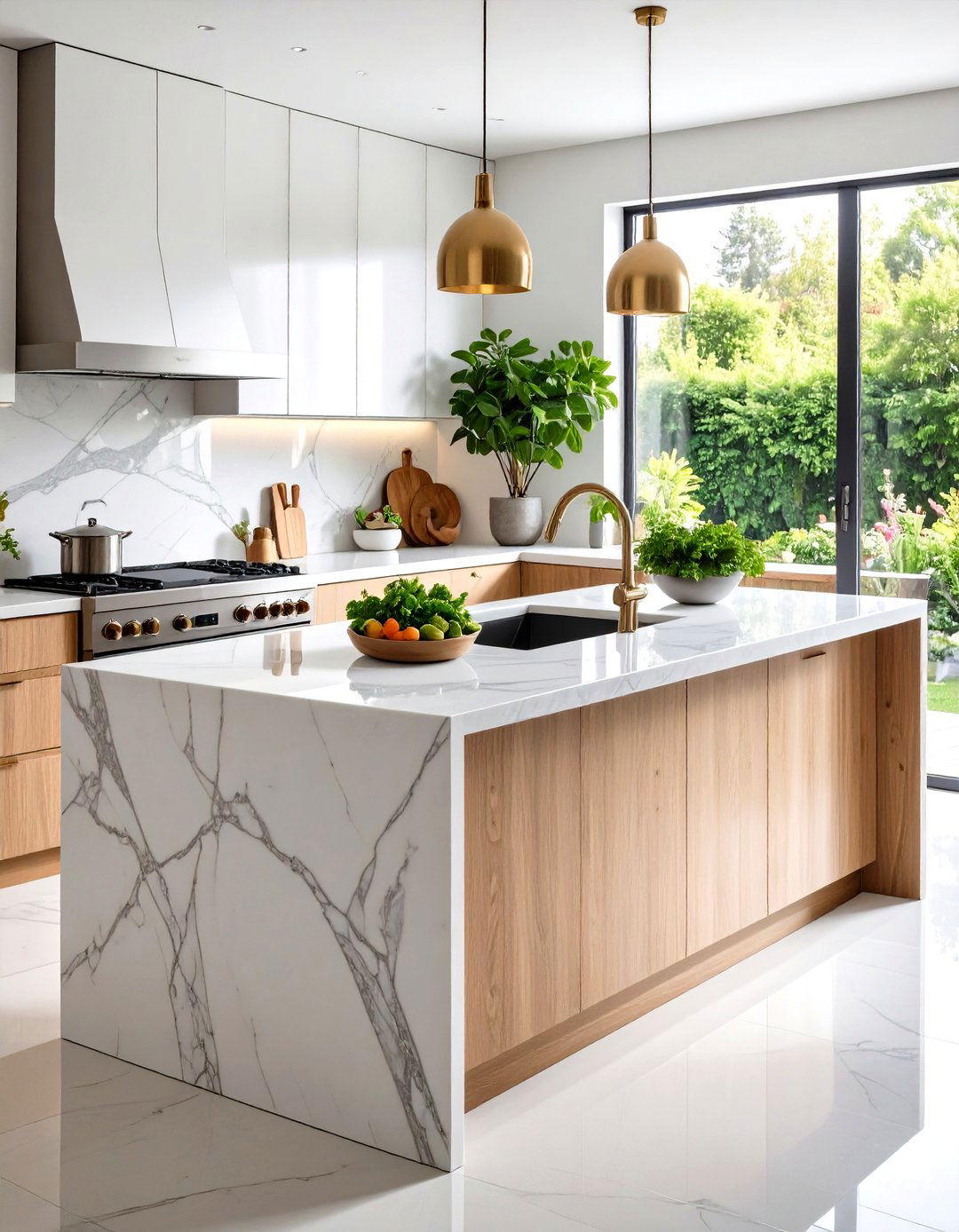
For busy households, integrating a large single-bowl workstation sink beside a sloped drainage board carved directly into the marble streamlines cleanup. Extend the slab upward as a 15-centimeter splash to protect cabinetry from stray water. A secondary pull-out compost chute drops peels into a concealed bin, and the opposite end stays dry for pastry rolling. Finish with a touch-responsive faucet in brushed nickel to avoid fingerprint smudges on the pristine surface.
5. Double-Tier Marble Kitchen Island with Bar Seating
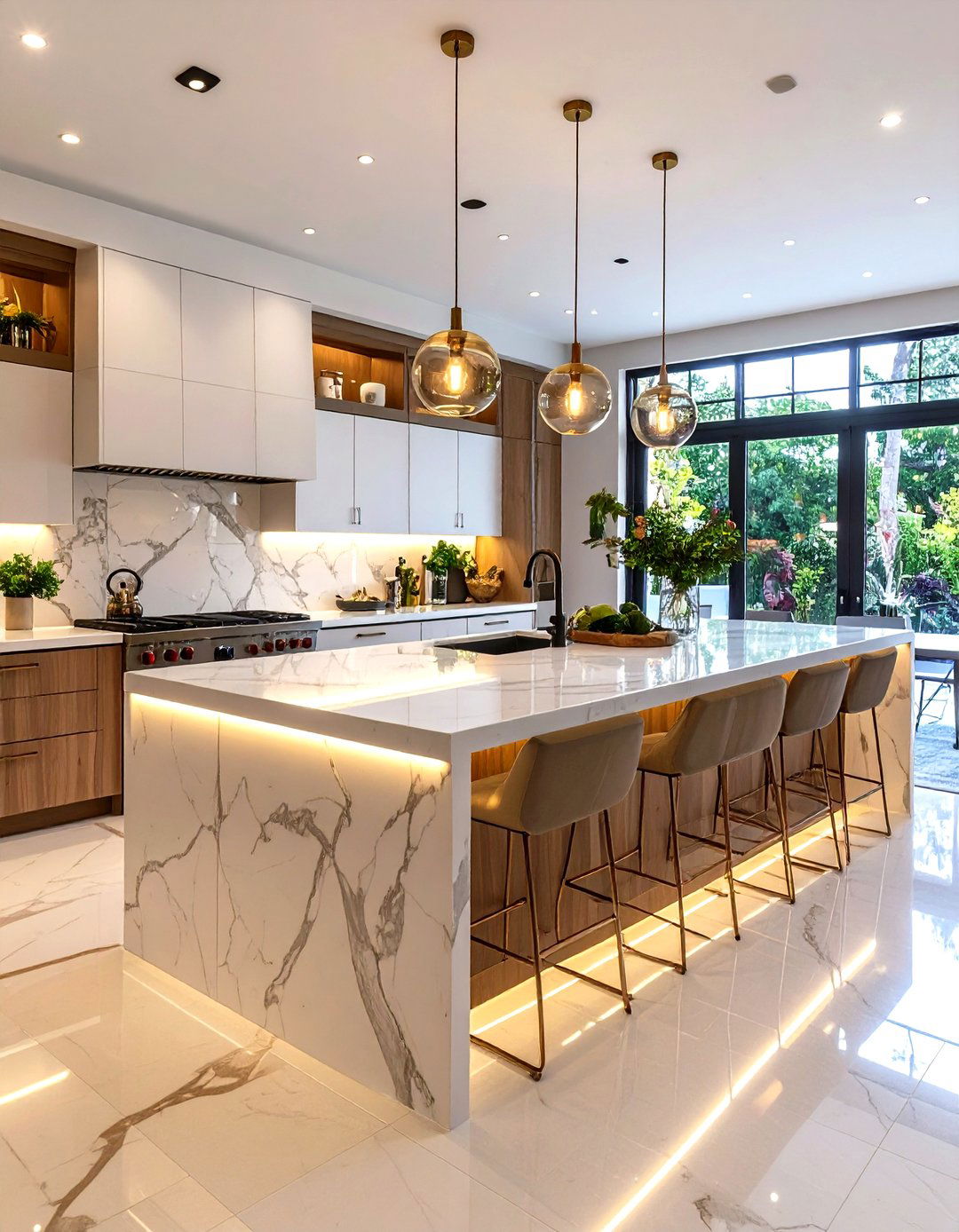
By integrating a raised serving ledge in the same stone, you create a clear divide between prep and social zones. The upper tier hides inevitable countertop clutter from guests while preserving eye contact. Fit dimmable strip lights beneath the lip to illuminate drinks without overpowering the chef’s task lighting below. Choose a subtle, honed finish on the bar tier to resist etching from citrus cocktails, keeping a polished treatment on the lower worktop for effortless dough handling.
6. Marble Kitchen Island with Integrated Cooktop
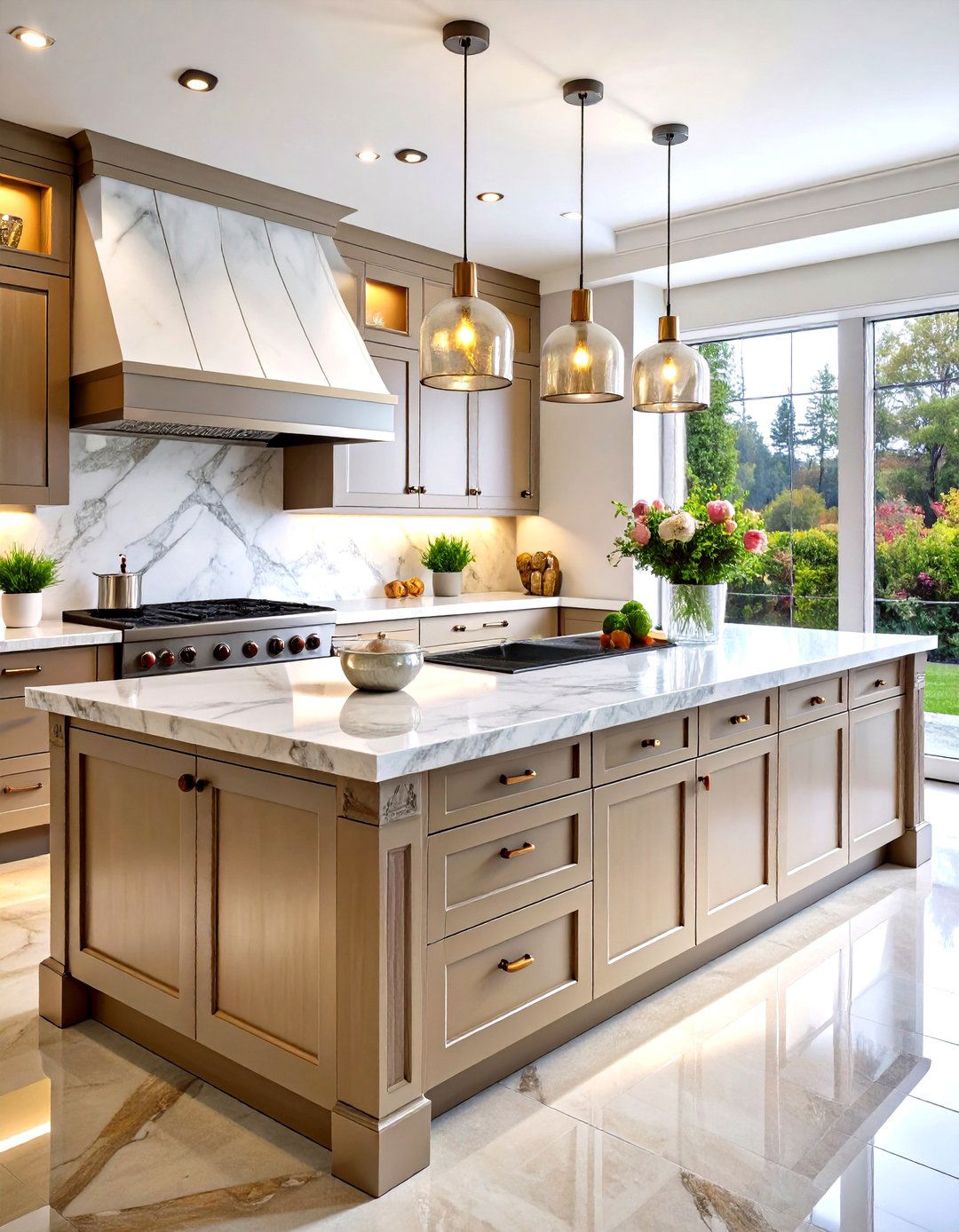
By integrating a flush-mounted induction surface mid-island, the chef faces outward, turning meal prep into theatre. Opt for a vent-in-drawer downdraft fan that retracts into the marble when not in use, ensuring the veined pattern remains uninterrupted. Flank the cooktop with symmetrical utensil drawers and spice pull-outs so everything is within a single pivot. Tempered-glass trivets set into the stone offer quick pan staging without marring the marble.
7. Curved Marble Kitchen Island
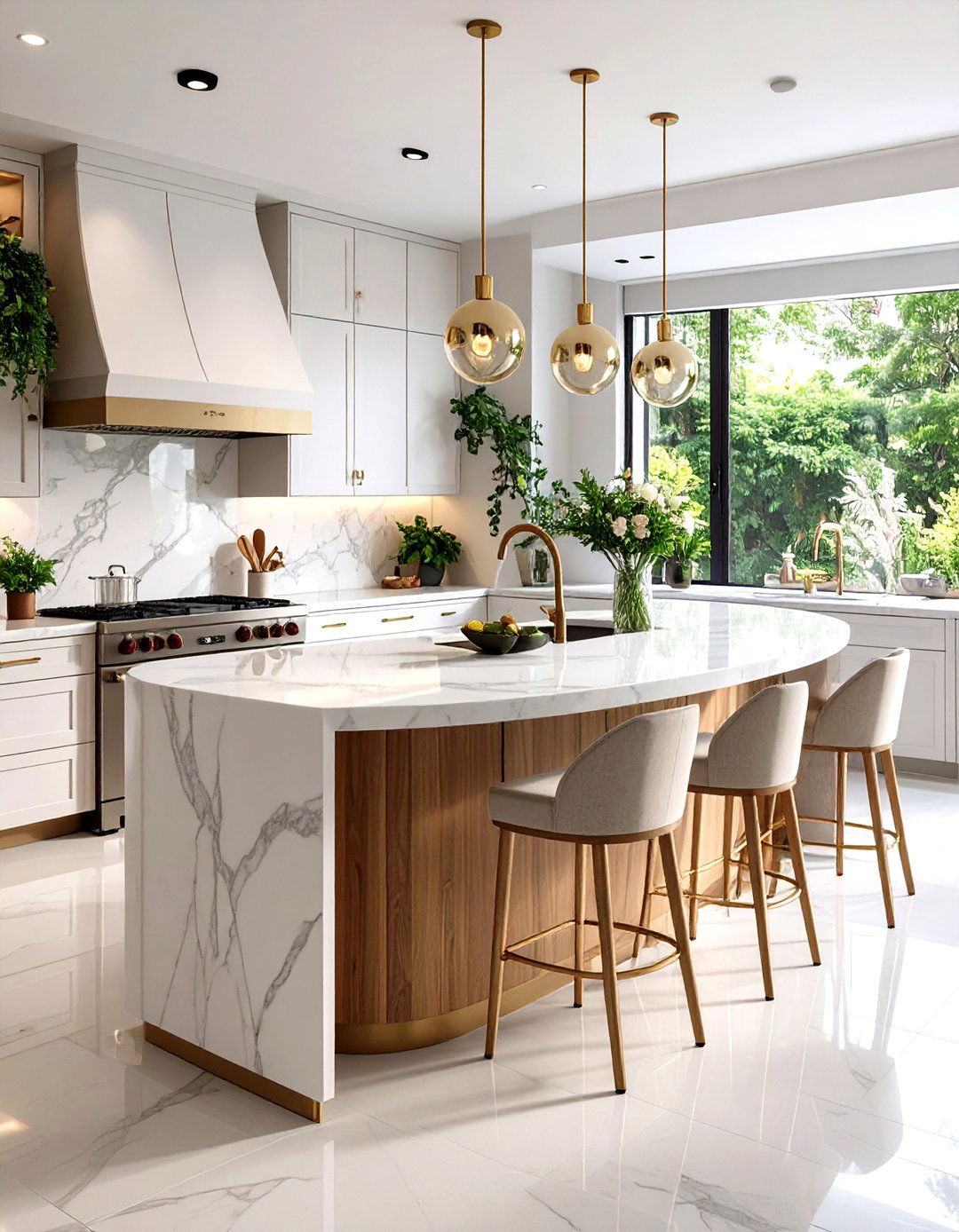
Another way to soften hard cabinetry lines is with a crescent-shaped slab that guides flow and avoids sharp corners. Radius edges invite family members to perch comfortably and reduce collision risk in tight galley kitchens. Situate the sink at the shallow curve, freeing deeper arcs for banquette-style seating. A plinth base in the same stone underscores the island as a fluid monolith, while concealed casters allow future repositioning during large gatherings.
8. Floating Marble Kitchen Island on Plinth

With its recessed shadow gap along the floor, the island appears to hover, spotlighting the stone’s mass without visual heaviness. Structural steel inside the core carries the weight so the outer panels remain wafer-thin, echoing techniques seen in high-end Italian showrooms. Use under-plinth LEDs to accentuate the levitation effect and act as a subtle nightlight. Pair with handle-less drawers to preserve the minimal silhouette.
9. Marble Kitchen Island with Brass Accents
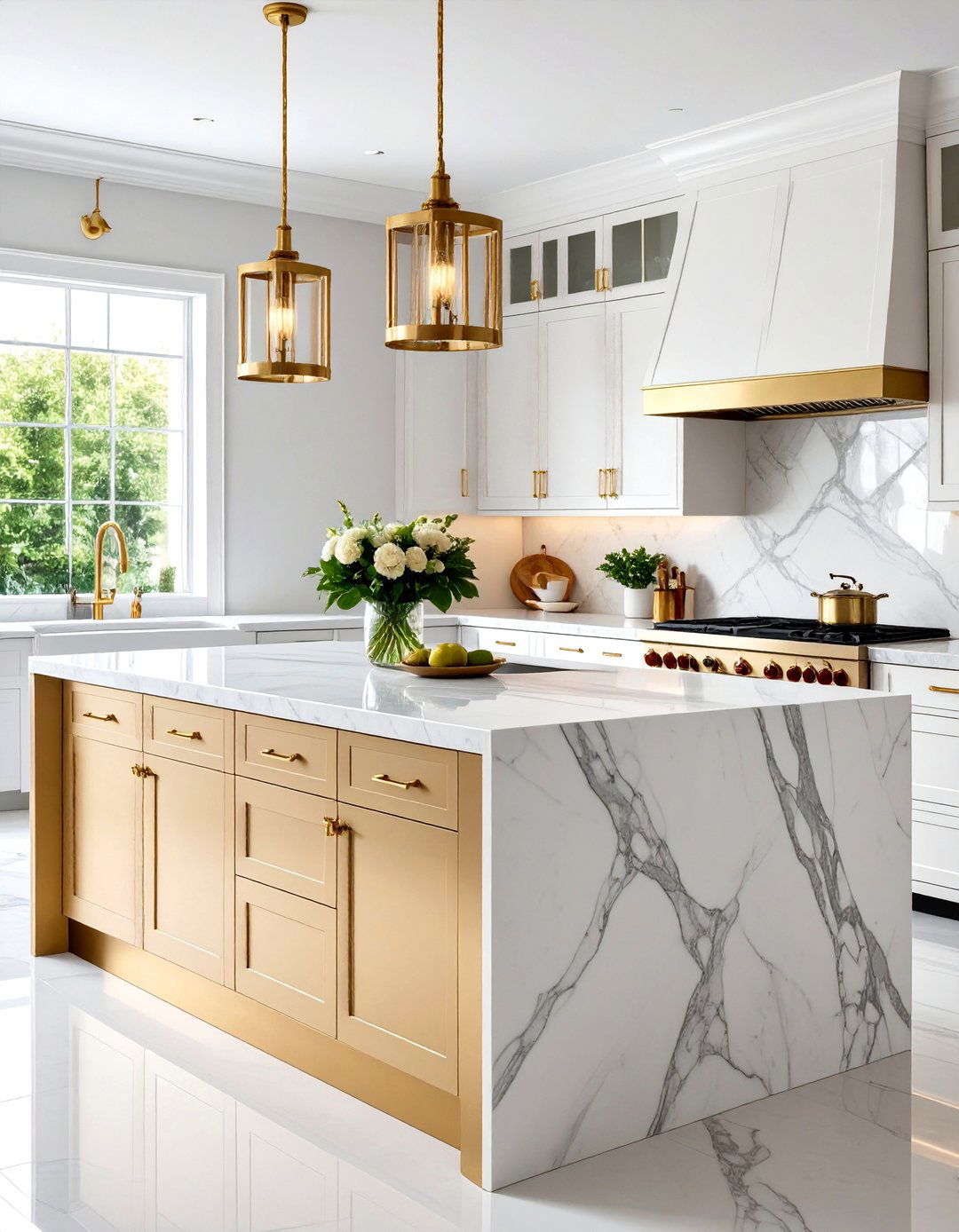
Looking for warmth against cool stone? Inlay slender brass strips into waterfall edges, or wrap drawer pulls in unlacquered brass that patinates gracefully over time. Brass-framed glass shelving cantilevered from one end becomes a chic wine display. Match the metal with faucet, foot rail, and pendant hardware for coherence, but vary surface textures—satin, brushed, hammered—to keep the look layered rather than forced.
10. Mixed-Material Marble & Wood Kitchen Island
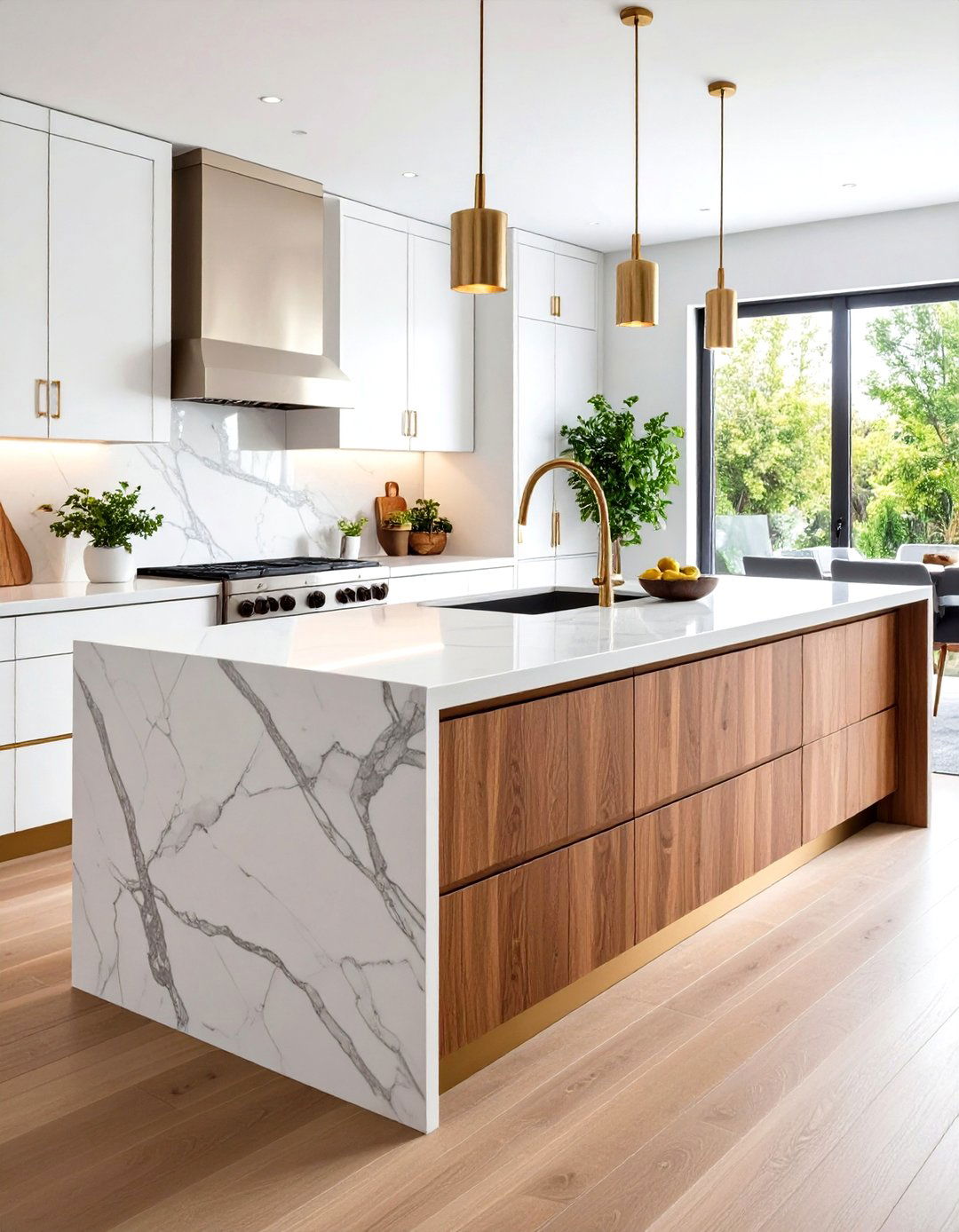
Take hybrid aesthetics further by cladding the prep face in richly grained walnut and capping the top and sides with White Macaubas marble. The wood offers warmth where knees touch, while the stone provides a sanitary work surface. A hidden sliding butcher-block insert glides over the marble to create a dedicated chopping zone and protects knives. Finish with slim-line bronze toe kicks to tie both materials together.
11. Sculpted Monolithic Marble Kitchen Island
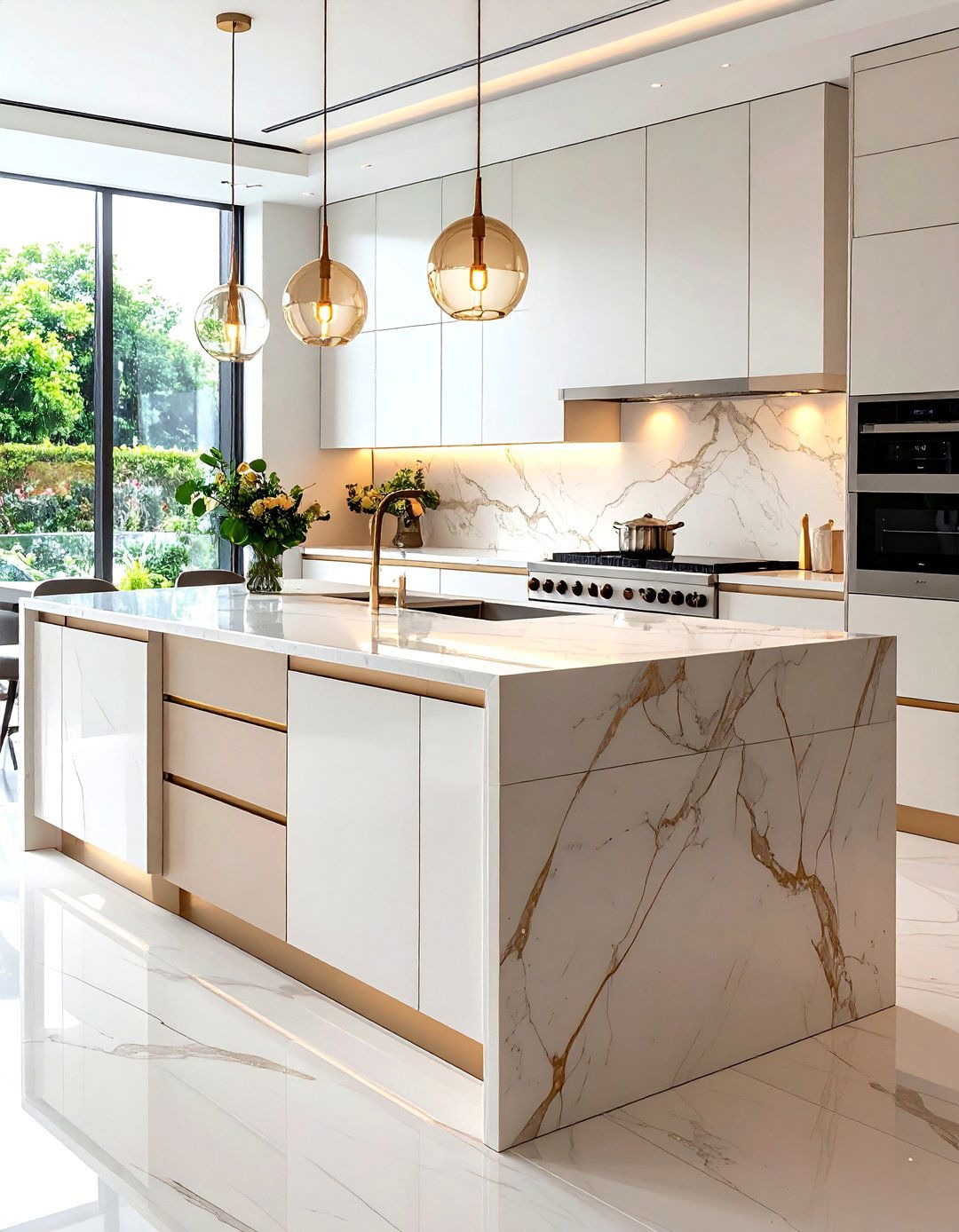
Certainly, a single, block-like island carved with curved recesses and integrated handholds becomes a centerpiece of architectural storytelling. CNC milling allows for smooth grips instead of add-on hardware, leaving the veining uninterrupted. A matte honed finish minimizes glare under daylight, while a concealed strip of ventilation beneath the overhang doubles as toe-kick and HVAC outlet, preventing hot air from damaging the stone.
12. Bookmatched Veining Marble Kitchen Island
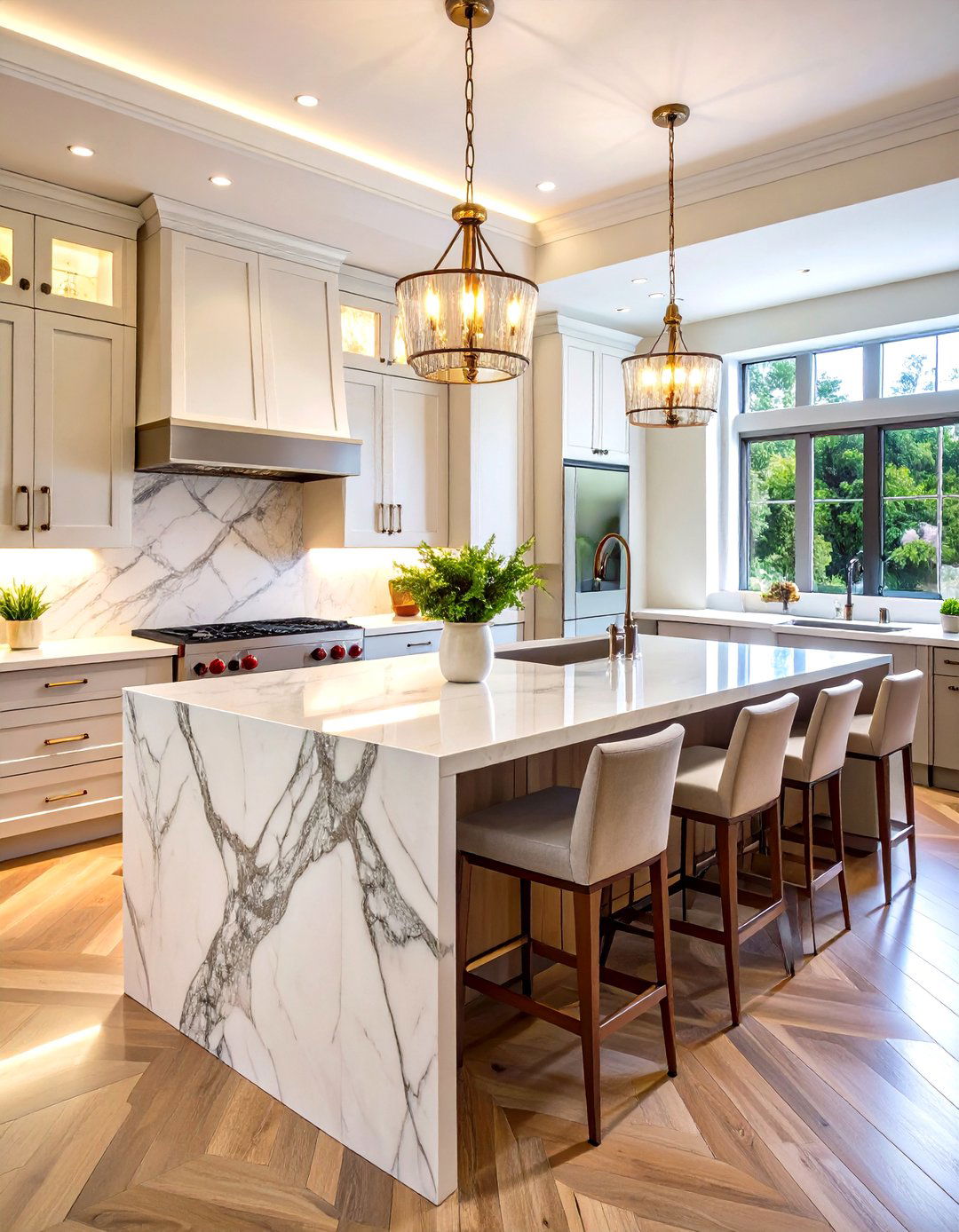
Owing to meticulously mirrored slabs across the seam, bookmatching transforms natural patterns into symmetrical art. Select slabs cut consecutively from the same block, then dry-lay during fabrication to preview alignment. Seam placement should follow major vein trajectories so the joint nearly disappears. Consider a waterfall leg to extend the mirror image vertically, accentuating the visual drama. Regular resealing safeguards that flawless seam from moisture infiltration.
13. Compact Rolling Marble Kitchen Island for Small Spaces
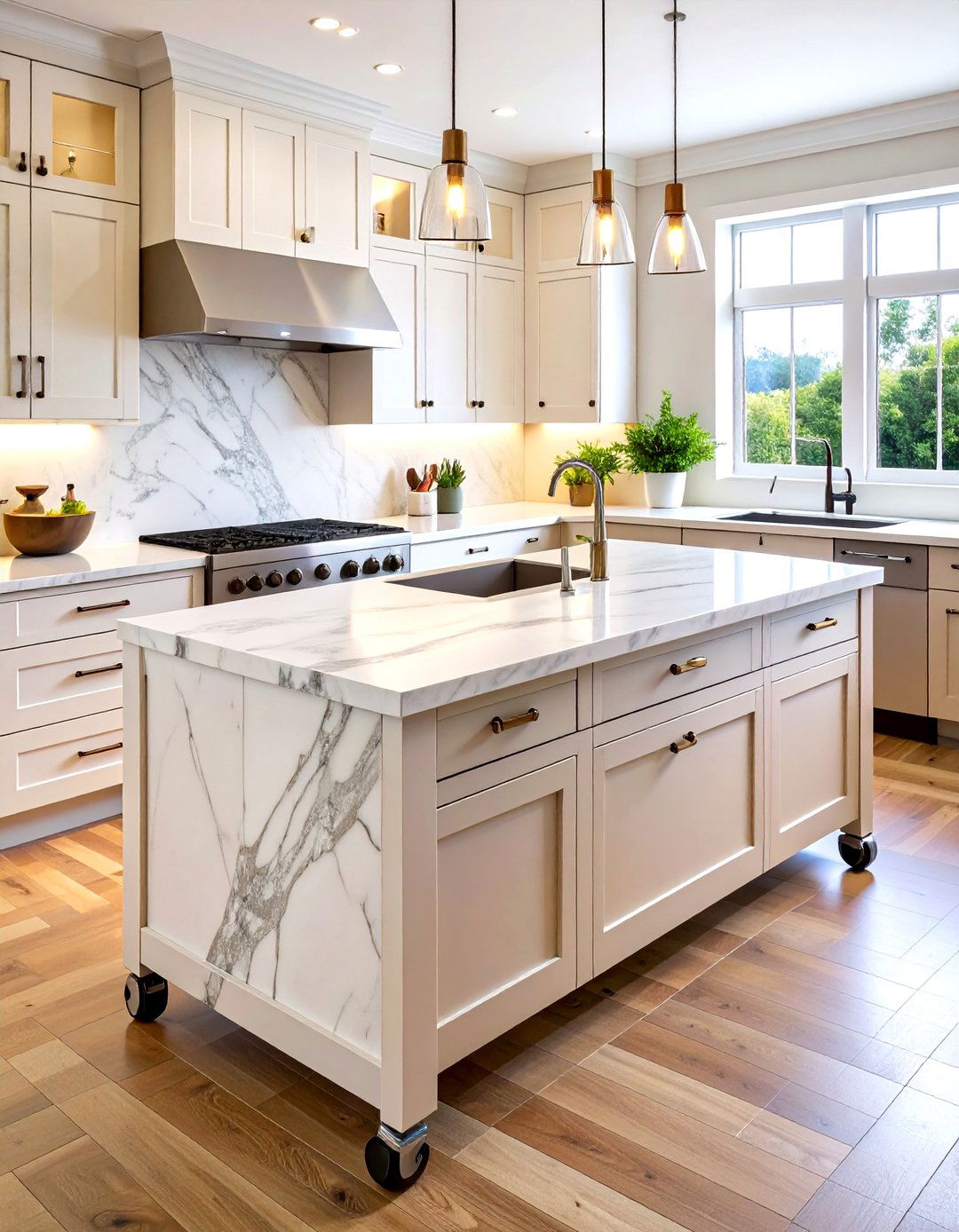
Meanwhile, urban apartments benefit from a scaled-down island set on heavy-duty locking casters. A 40-millimeter-thick marble top adds luxe heft, counterbalanced by lightweight steel framing beneath. Side rails double as towel bars, and a drop-leaf extension flips up for extra prep area when entertaining. Store it against a wall as a console between uses, then wheel it center stage for Sunday batch cooking.
14. Marble Kitchen Island with Open Shelving
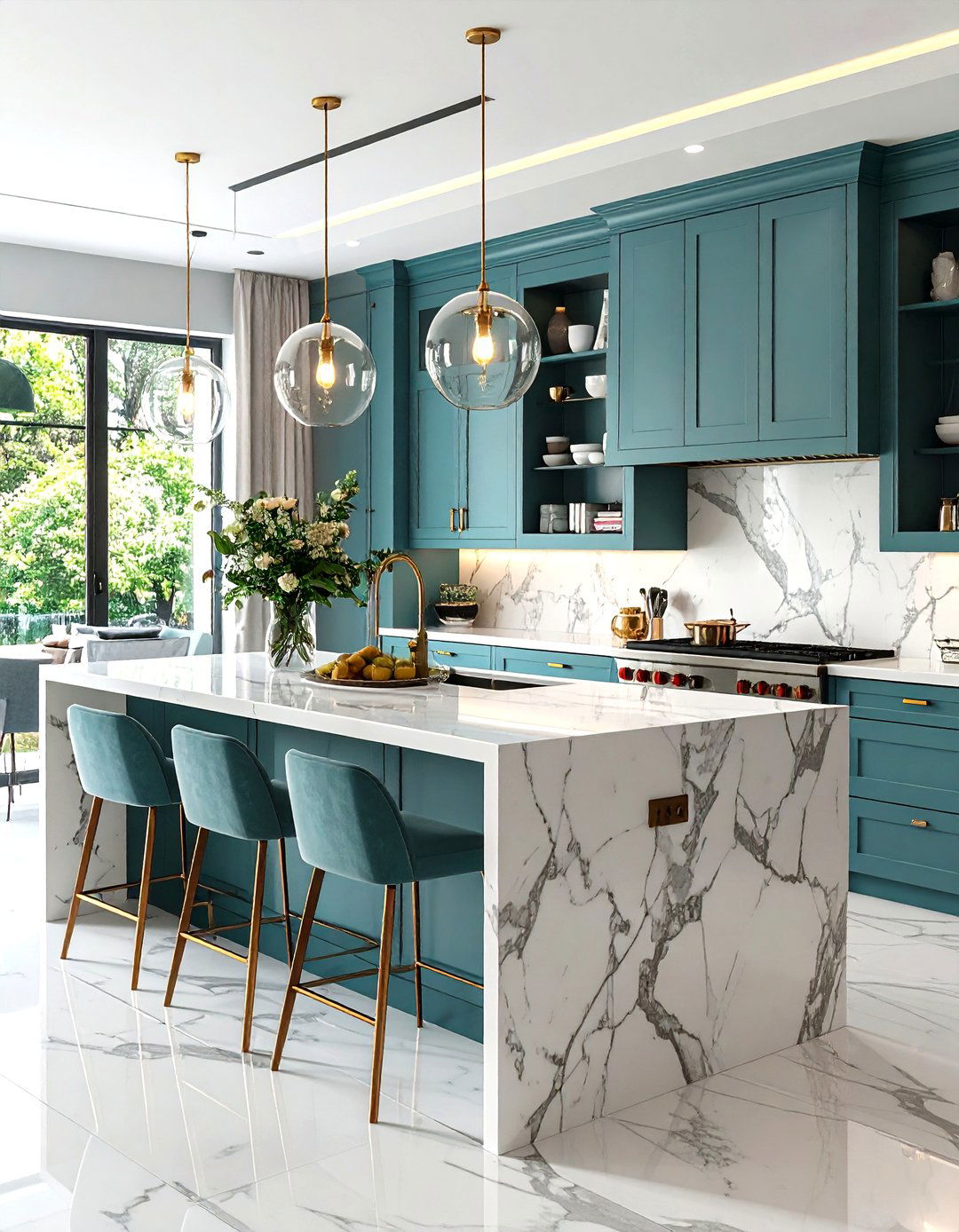
When display matters as much as storage, carve out wide alcoves on the dining-side face for cookbooks, ceramics, or live-edge breadboards. Reinforce each shelf with hidden steel so the marble lip remains slender. LED puck lights recessed in the shelf ceilings cast a museum-like wash over objects, elevating even humble mixing bowls to art. Balance openness with at least one closed drawer bank to hide less photogenic gadgets.
15. LED-Lit Waterfall Marble Kitchen Island

What better way to dramatize swirling veins than by washing them with edge-mounted linear LEDs? Install weather-sealed, low-heat strips behind a frosted diffuser along the underside of the waterfall, tuned to a warm 2700K for cozy ambience. A voice-controlled driver lets you dim lights while cooking, shift to cooler tones for task work, or sync with circadian rhythms. Always run wiring through protective conduit to avoid moisture intrusion at miter joints.
16. Rustic Farmhouse Marble Kitchen Island
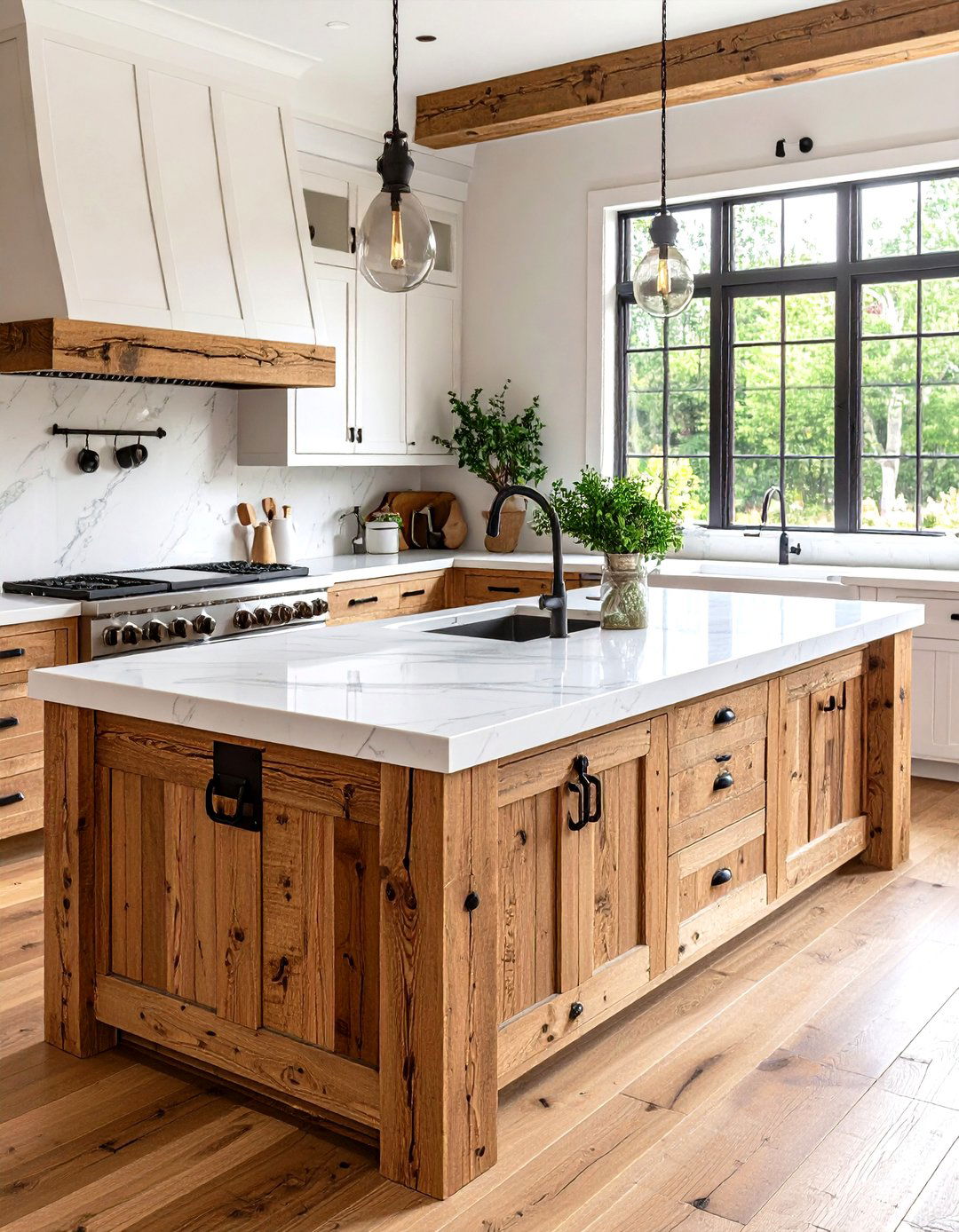
Despite the marble’s luxe reputation, pairing a honed Carrara slab with reclaimed barn-wood legs creates an inviting, unfitted farmhouse mood. Pegged joinery, visible dowels, and soft-edge chamfers complement the stone’s organic veining. Integrate hand-forged iron hooks beneath the overhang for aprons, and use an oiled finish on the wood for easy touch-ups. A simple ceramic sink set into the slab keeps the look authentic rather than fussy.
17. Marble Kitchen Island with Breakfast Nook Extension
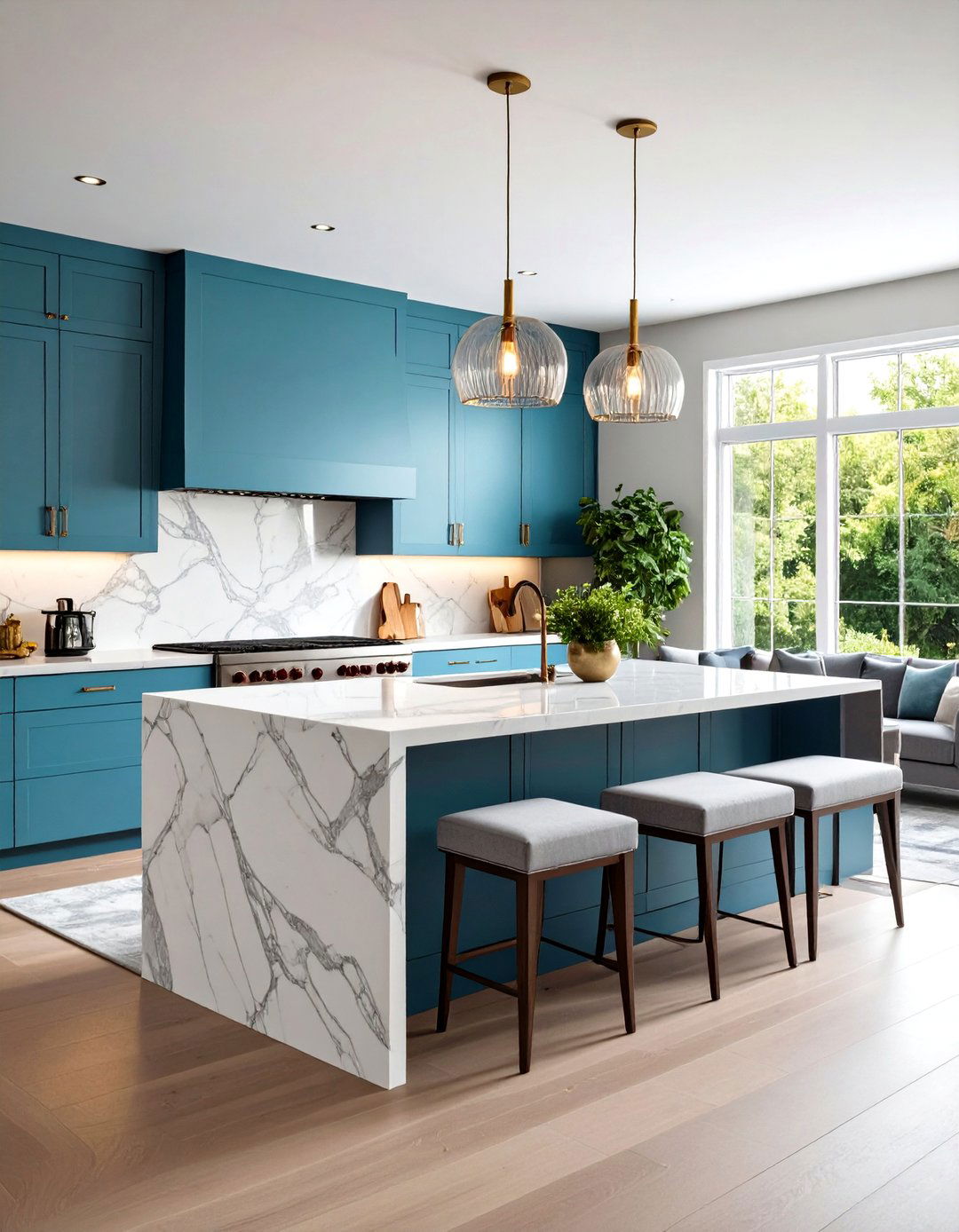
Bringing café comfort home, a semi-circular banquette attached to one end of the island encourages lingering over pancakes. Upholster seating in wipeable performance fabric, and install a supportive plywood sub-frame tied into the island’s base cabinetry for structural stability. Position a statement pendant above the nook to delineate the zone visually, leaving the prep area under brighter task lighting.
18. Outdoor Marble Kitchen Island
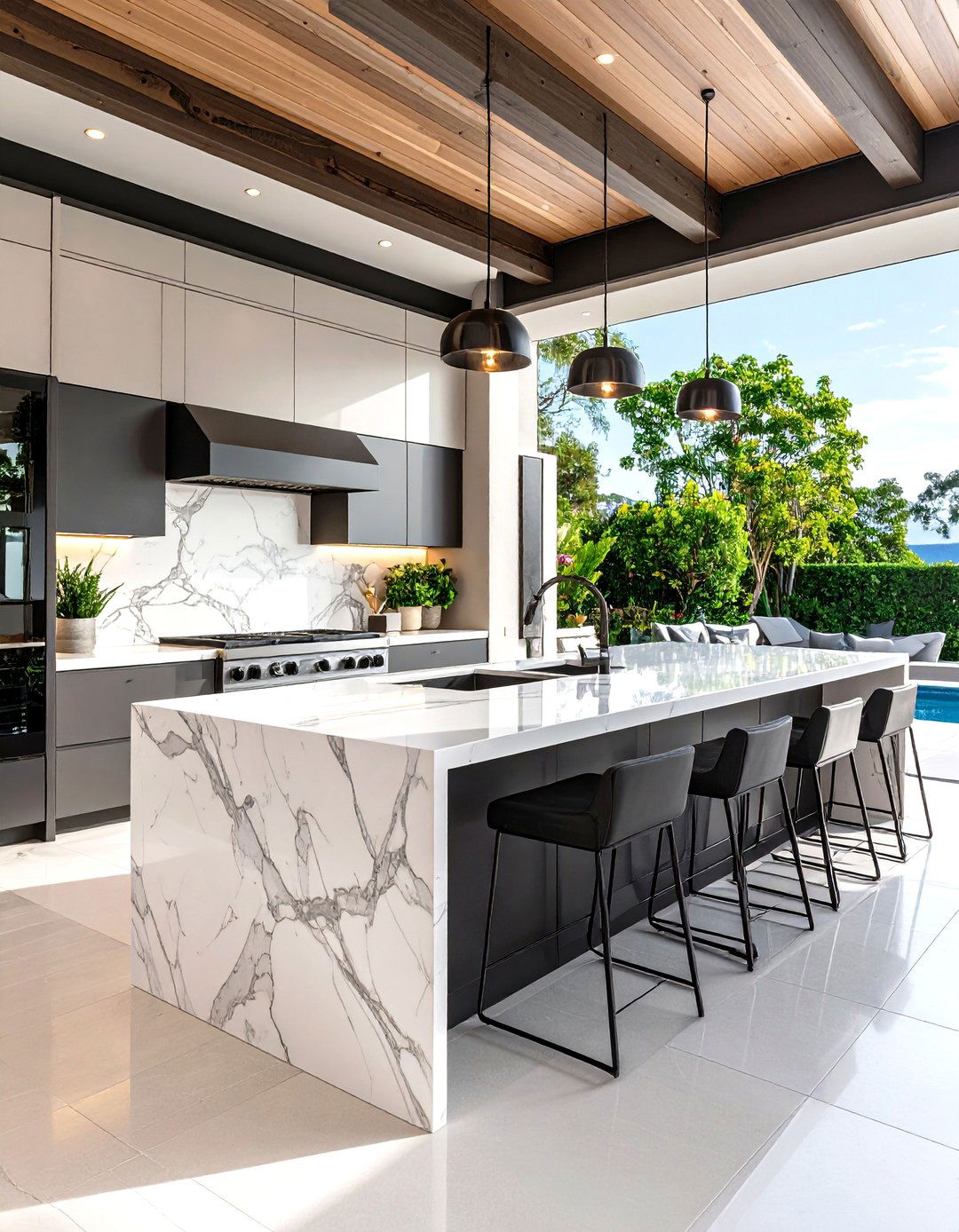
As al-fresco living becomes mainstream, weather-rated marble such as elegantly veined Black Marinace stars in sheltered pergolas and poolside kitchens. A steel-reinforced concrete core prevents cracking from thermal fluctuations, while a custom cover protects the surface off-season. Incorporate a linear trough cooler carved into the slab for chilled beverages, draining into concealed PVC piping. In climates prone to salt spray, opt for marine-grade stainless hardware to avert corrosion.
19. Marble Kitchen Island with Tiered Storage Drawers
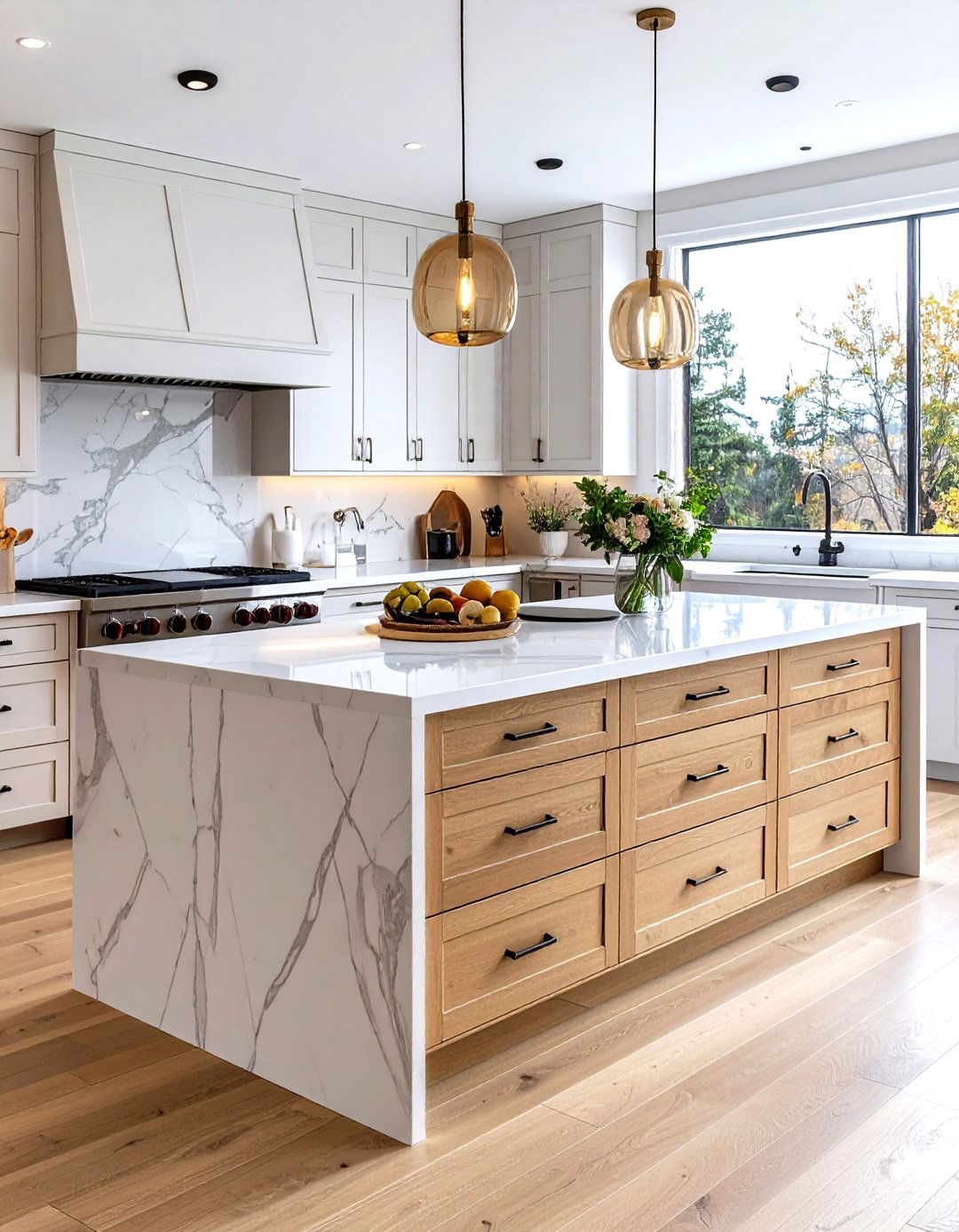
To tackle utensil overflow, arrange drawers in graduating depths—45 mm for flatware up top, 120 mm for gadgets, 240 mm for pans—each riding on soft-close full-extension glides. The front panels align flush, maintaining a monolithic marble face when shut. Cutlery organizers, knife blocks, and peg systems are removable for cleaning, prolonging drawer box life. A concealed charging niche at one end houses phones away from spills.
20. Sustainable Reclaimed Marble Kitchen Island
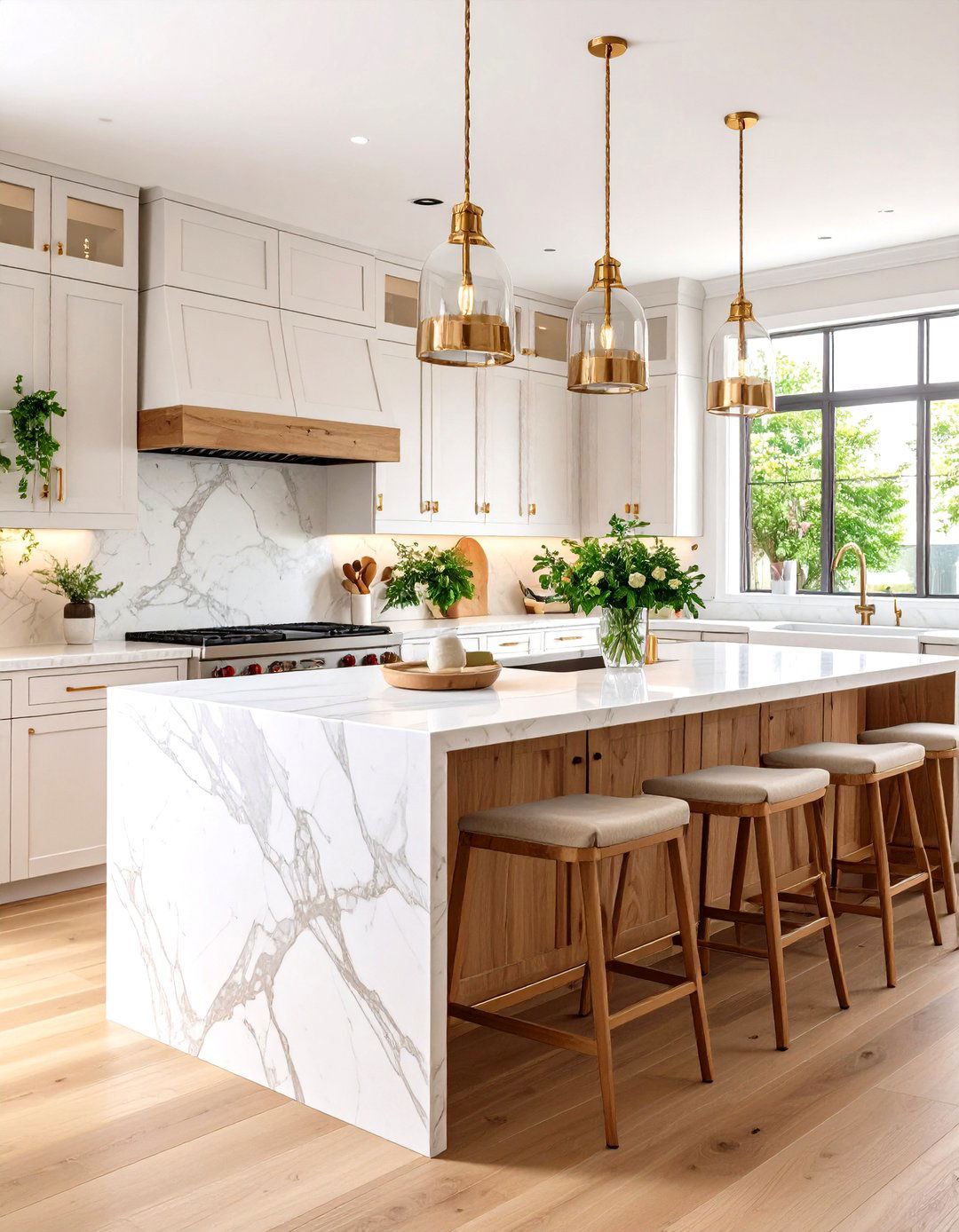
Finally, salvage yards and remnant suppliers offer sizeable slabs from hotel demolitions, trimming both carbon footprint and material cost. Combine rescued stone with repurposed cabinetry boxes painted to match your scheme, just as budget-savvy renovators do in trend-setting Brooklyn lofts. Edges may show small plugs or repairs—treat them as patina that tells the material’s story. Finishing with low-VOC sealers completes the eco-positive profile without sacrificing luxury.
Conclusion:
All things considered, marble’s versatility lets you shape the kitchen island into anything from sculptural art piece to hardworking Swiss-army workstation. Whether you lean minimalist or farmhouse, monolithic or mixed-material, the ideas above showcase how thoughtful detailing, smart integration, and the right finish unlock functional beauty that ages gracefully alongside everyday life.




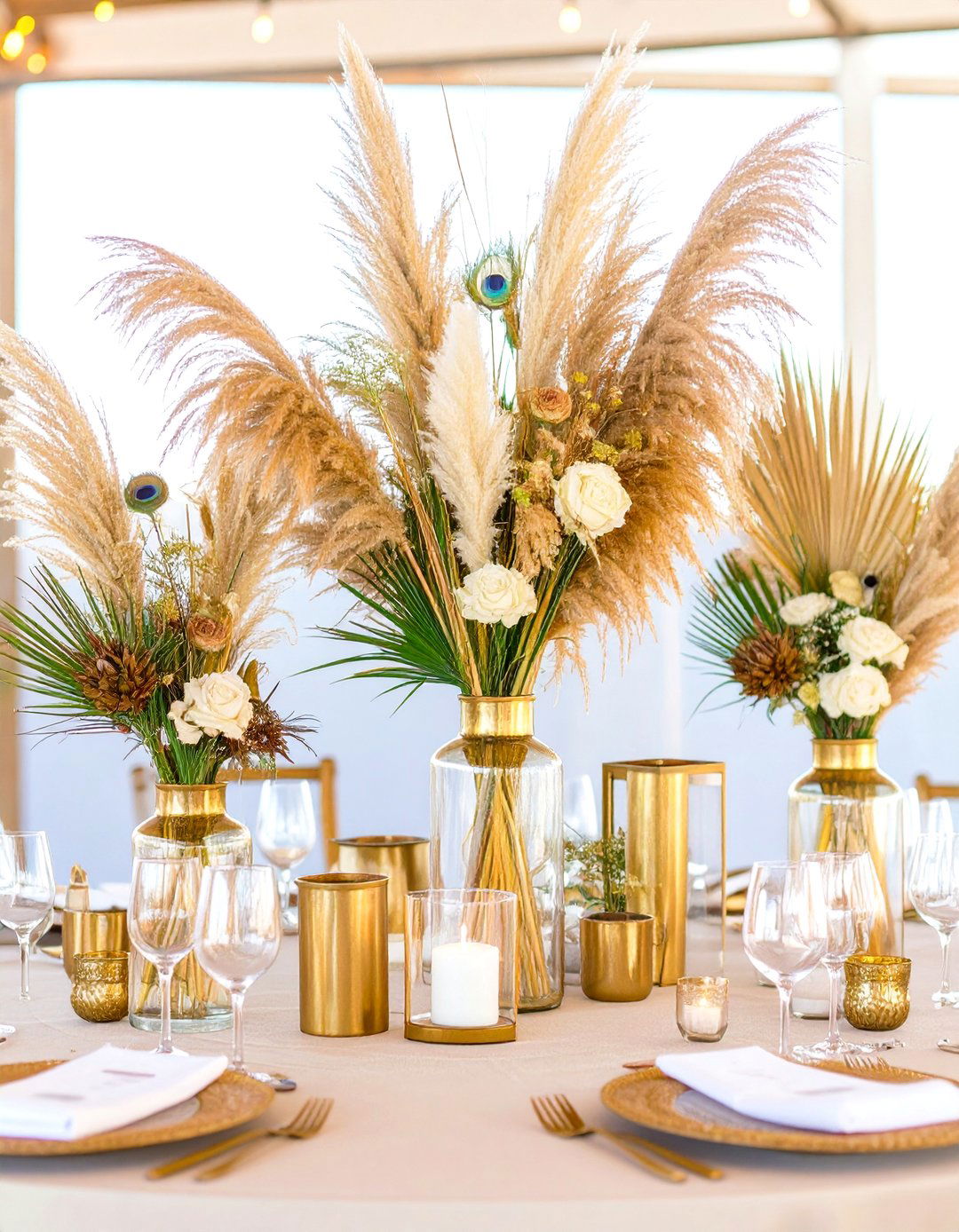
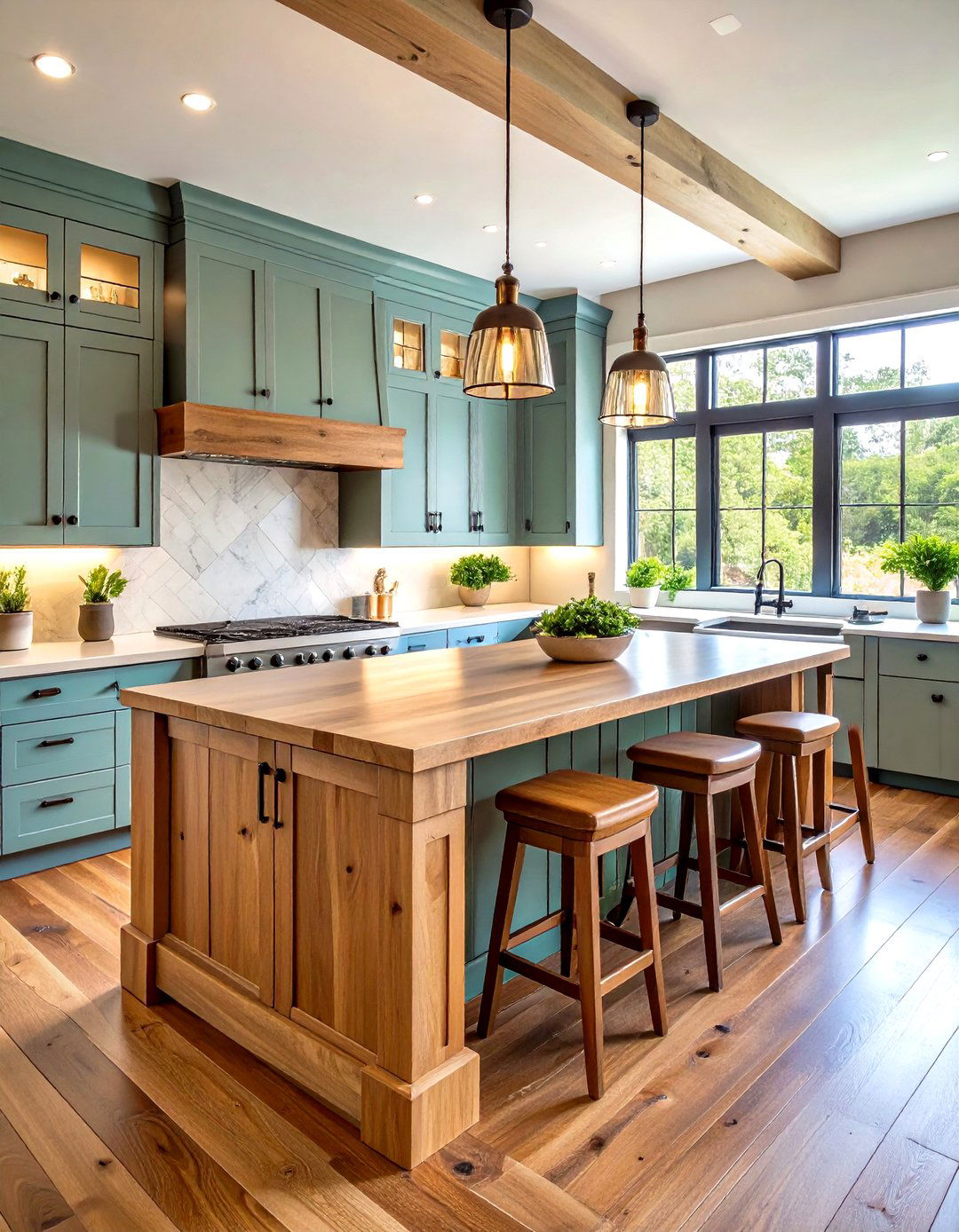
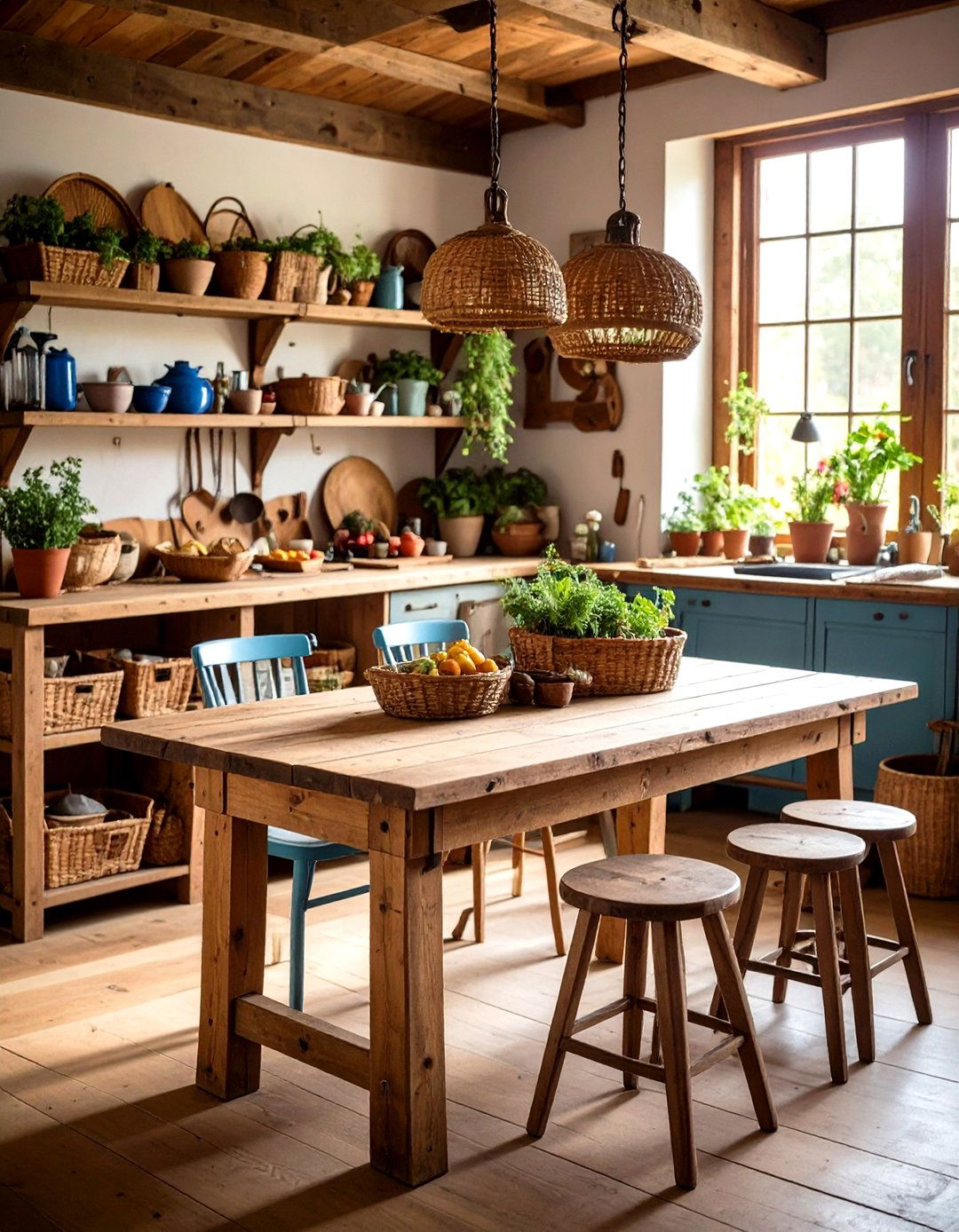
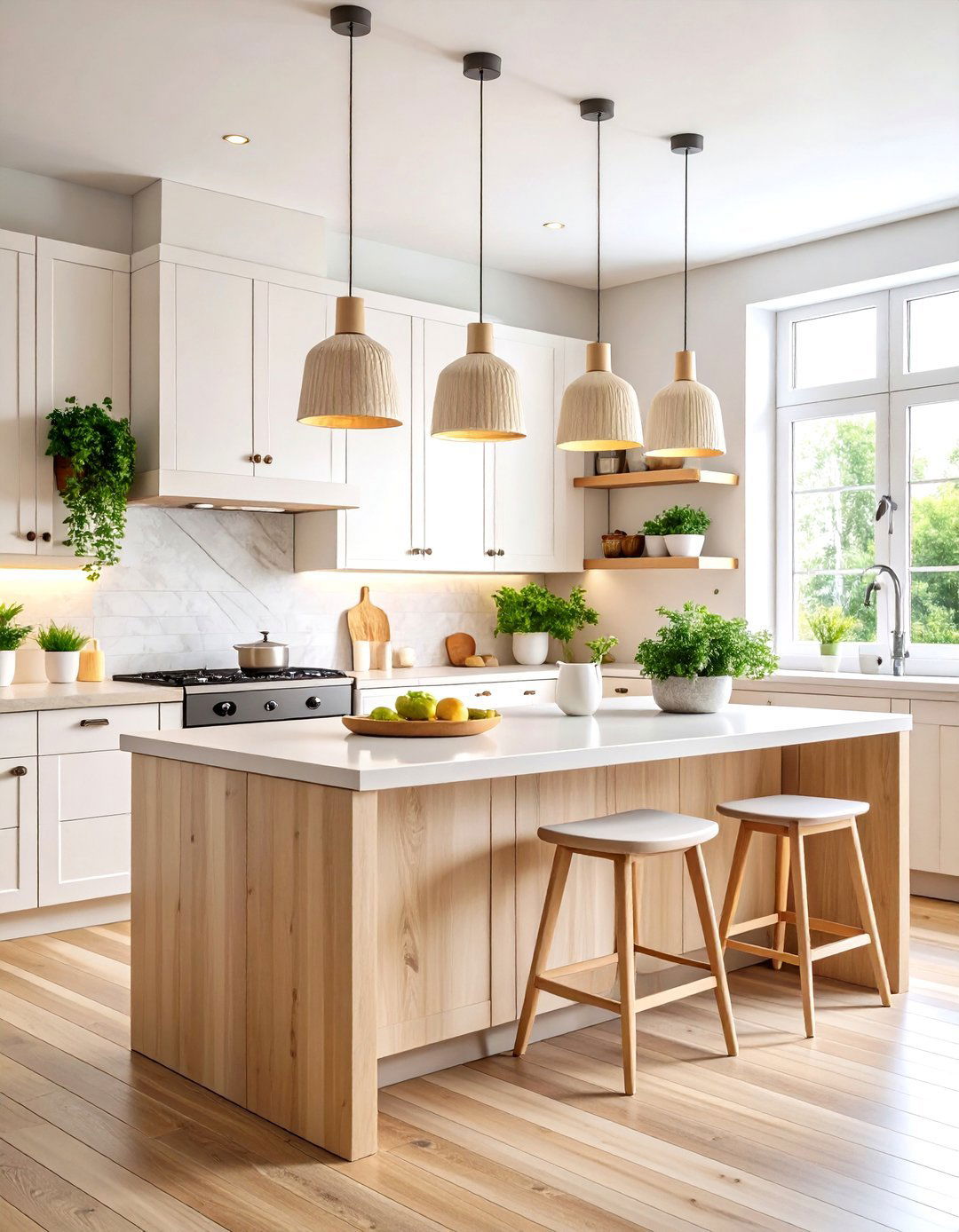
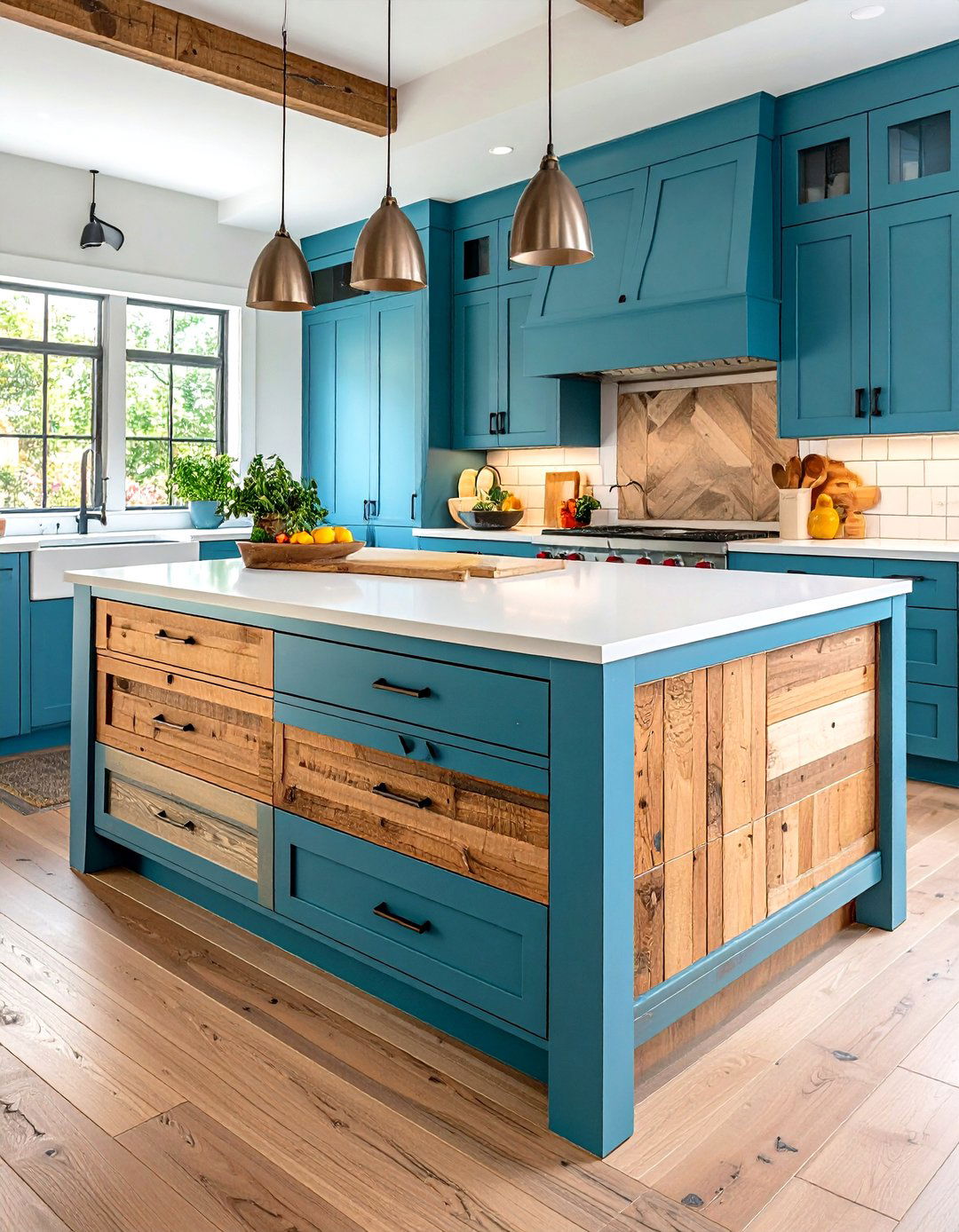
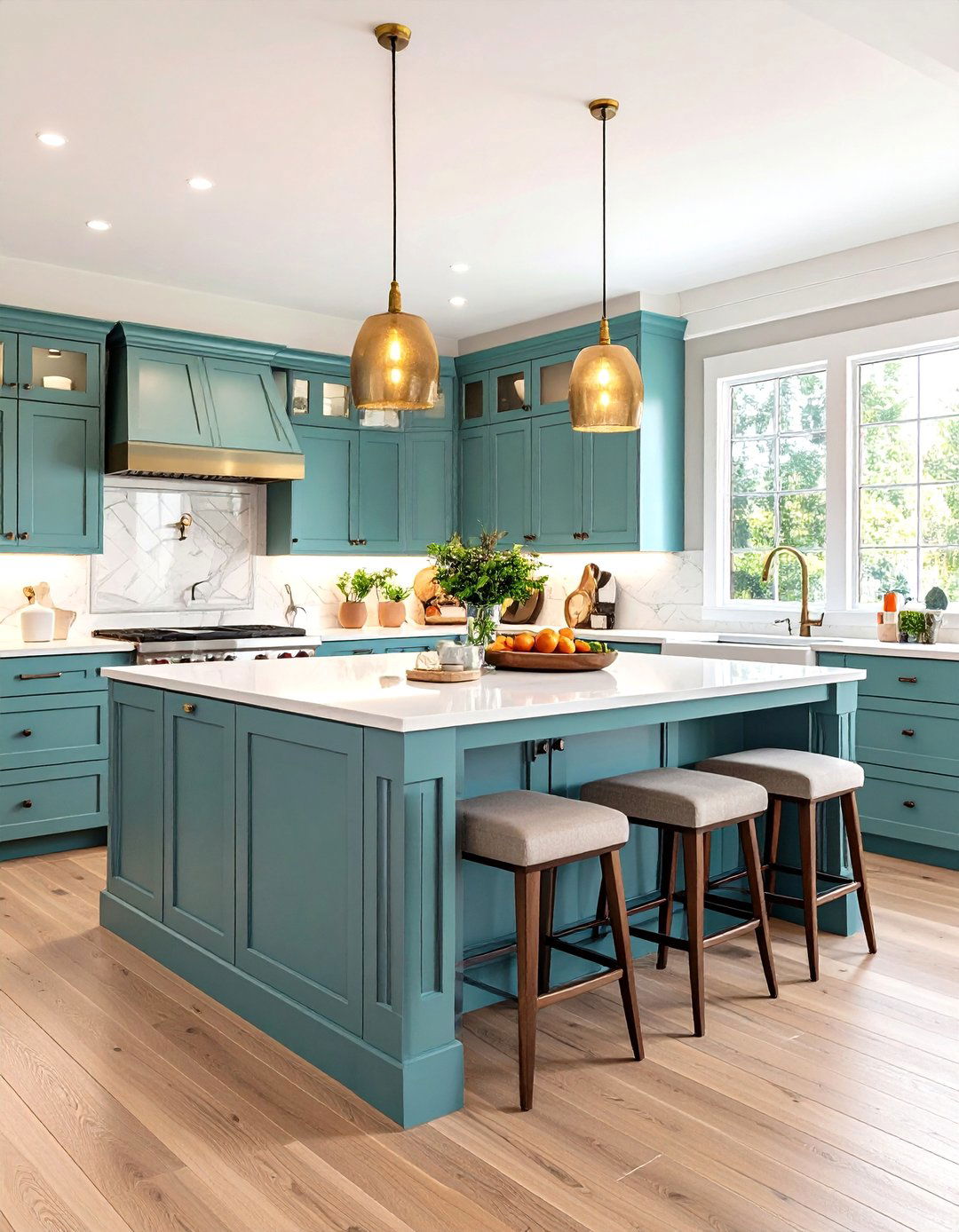

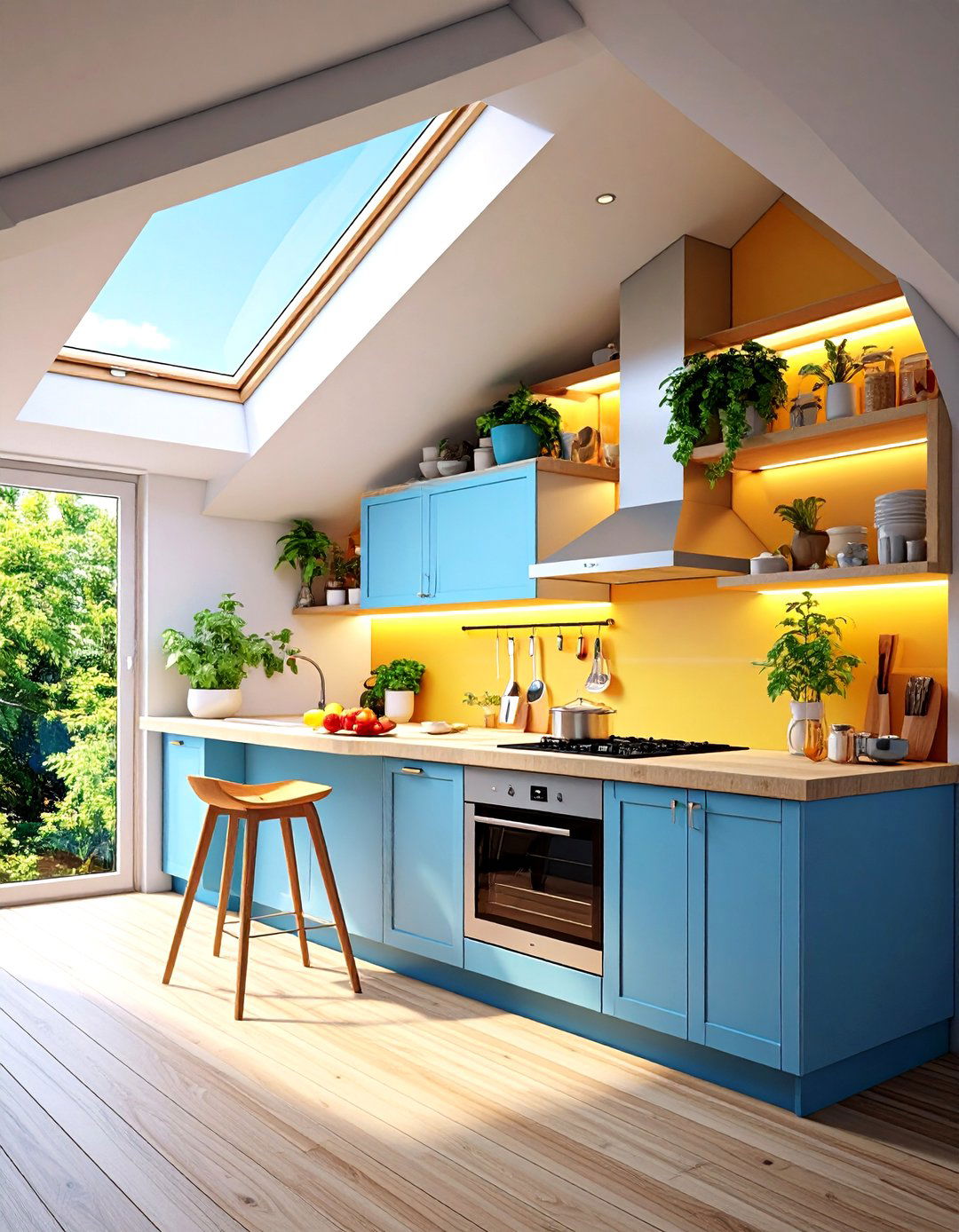

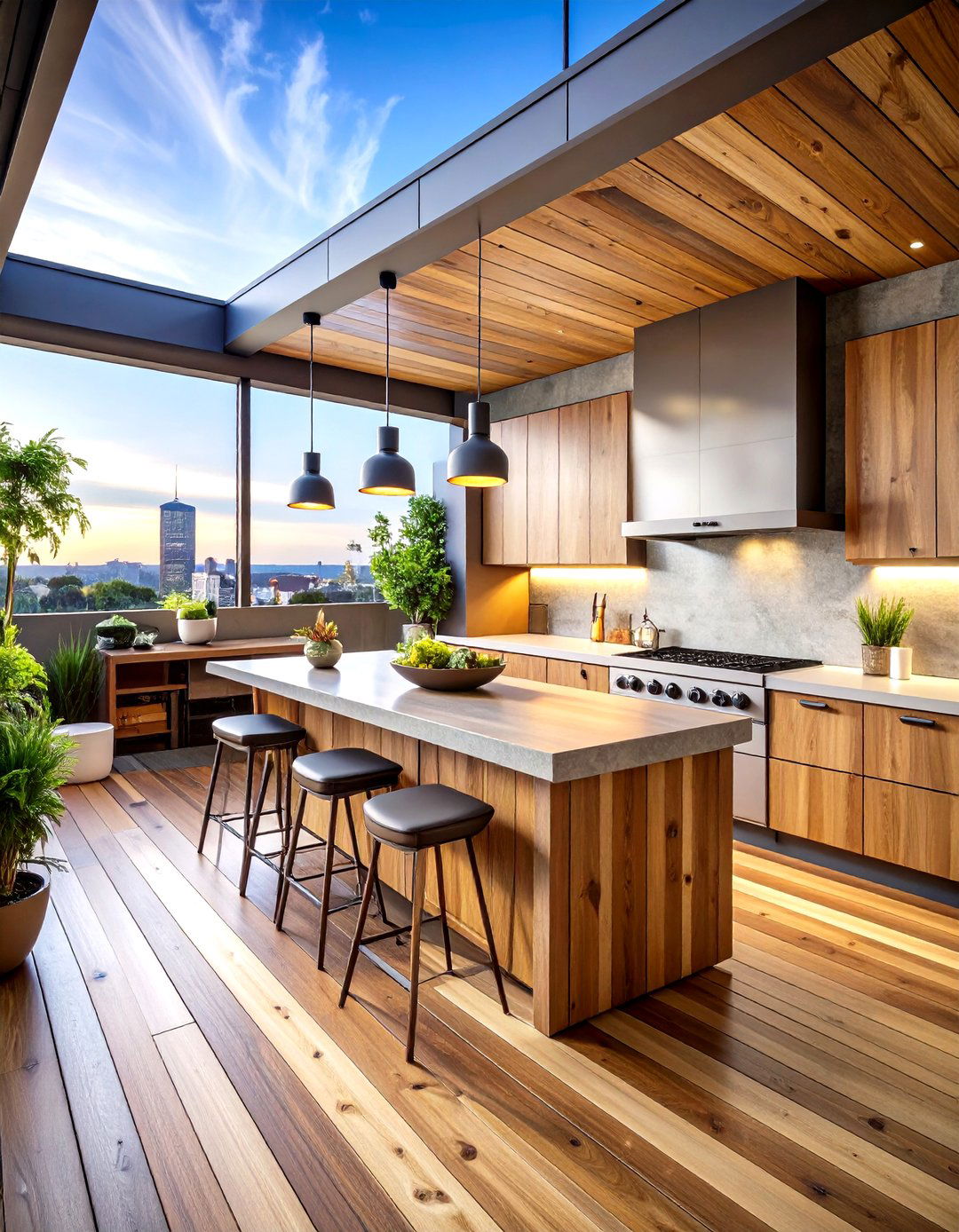
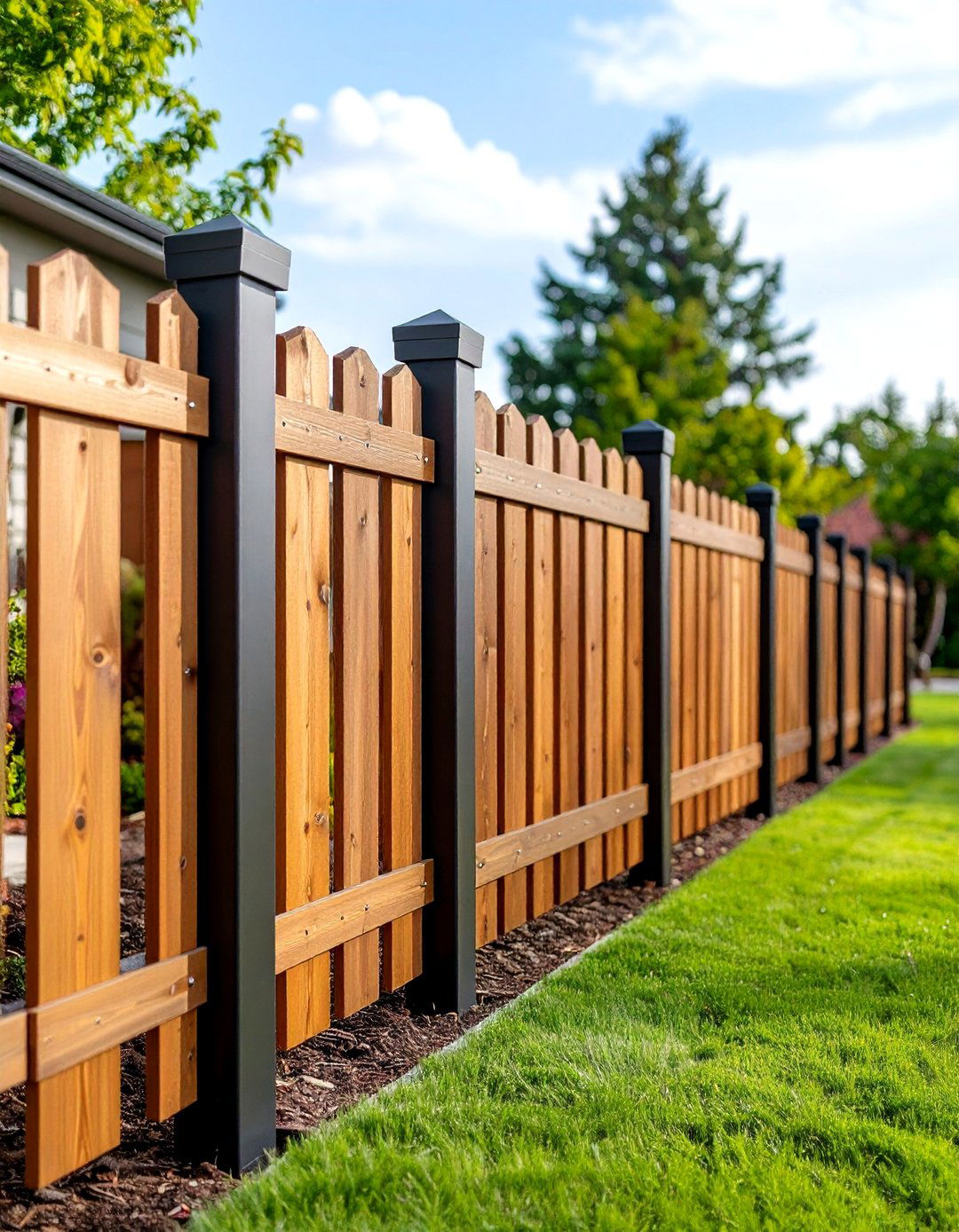

Leave a Reply